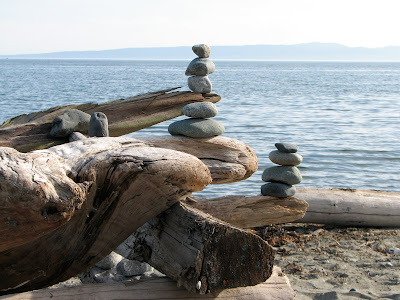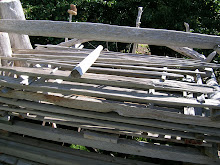 My favorite
My favorite exercise is walking.
I particularly like to
walk in nature.
I build
on physiological repetition.
Steps create a meditation. I play,
repeating a simple act over and over again.
My body, mind, and spirit know that I play.
In my soul I play and something soothes; something heals.
Repetition Exercise #3: Walking
Go walking and consider the repetitions.
The breaths, the steps, the rising and falling of limbs, posture...
Think about how each aspect repeats.
Move through space.
Include the sensation of air and of clothing on the skin
and even include thoughts in the mind.
Some of these patterns get very little attention.
Structure the thoughts as a meditation on being grateful
or observe thoughts and watch them form repetitive patterns around feelings.
I add picking something up while walking.
The act becomes another type of repetition in the dance.
Anything can define something.
It seems ironic that this section has to be rewritten because I erased it by playfully hitting some computer keys. In the interim since this event occurred, I have learned the value of an undo command.
I did lie down on the floor and play dead in order to regain the strength to type what I had just finished transcribing. For an empathic reference, consider I never learned to type. It took hours. In recomposing my thoughts, the humor of the play on repetition sinks in.
Since I still don’t know the second thread that I planned to follow, I make a detour. I delete a few tangents. I remember the little boy saying over and over again some expression with potato. He must find this word a soothing auditory trigger. He uses a discordant intonation.
Repetition holds the essence of the initial step of what we could call getting warmed up to play. In one sense we already play. From our earliest games we repeat behaviors or even just rhythmic movement or sound. Over and over these activities thread together to create knowledge of basic behaviors. I remember bouncing a ball and counting the bounces, heading to one hundred. Was I five? Somewhere in the 70 somethings I remember jubilantly feeling that such high numbers and so many bounces were really something. A friend, describes hundreds of lay-ups in basketball repeated with pleasure. So we start play there. Quite soon the initial repetition becomes a phrase of its own, which repeats a new rhythm and then adds some subtlety of another dimension.
Look at patterns in nature, in music, and in architecture. These patterns remind me of the fundamental nature of play.
A rhythm carries us along for a while and then another replaces it and carries forth followed by yet another. And feelings accompanying them.
The way in which the universe organizes itself allows for some human awareness of this repetition.

Time creates repetitive phenomenon.
The quip being that time, a divine intervention, prevents us from experiencing everything at once.
Repetitions of hours or months or even moments create playful ways of linking events.
In each moment we begin a series of activities that form new patterns.









































